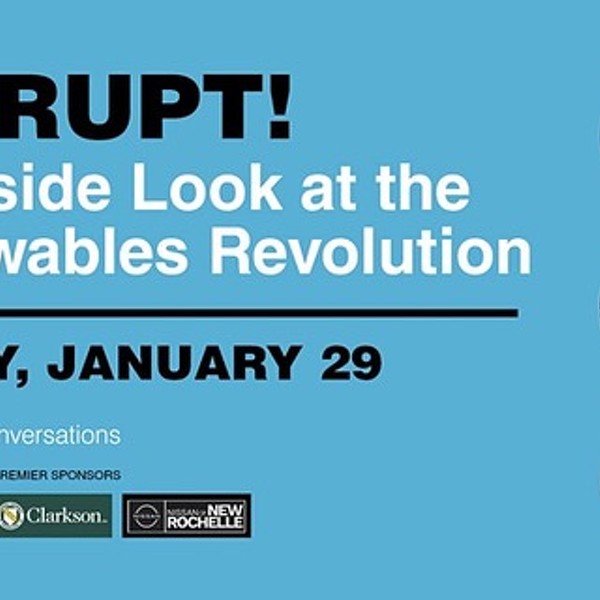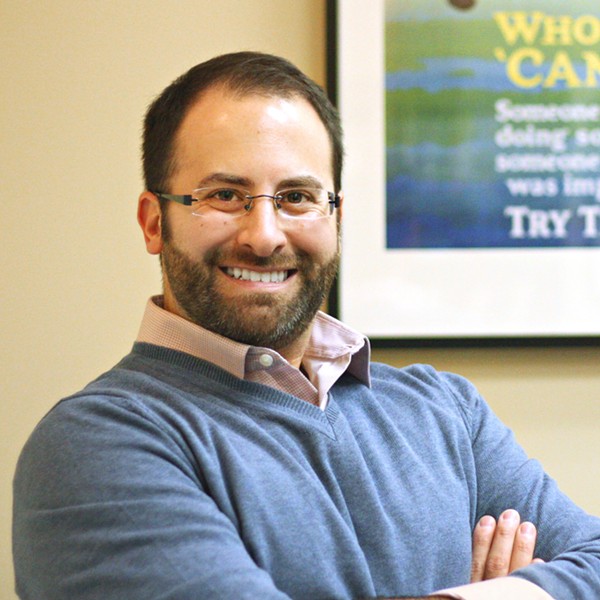Once Governor Cuomo lifts the moratorium on fracking and New York invests in building a natural gas infrastructure, will this investment be at the expense of developing renewable energies, which are vital to meeting the challenge of climate change?
As it is, New York trails six other states in number of solar installations. However, the state has gotten more aggressive, nearly doubling the amount of electrical generation it obtains from renewables in the last three years. By far the largest portion of this energy comes from wind; the rest consists of photovoltaics (PV), solar thermal, biomass, anaerobic digester gas, and fuel cells. The New York State Energy Research and Development Authority (NYSERDA), which administers the state’s Renewable Portfolio Standard, has set a goal of increasing the share of renewables to 30 percent by 2015 (that number includes hydropower, which is far more significant, constituting 15 percent of electrical generation in the state). NYSERDA also aims to reduce energy consumption 15 percent by 2015, compared to the 2011 level.
“New York has developed more than 1800 megawatts of renewables exclusive of hydropower and that’s more than any other state in the Northeast,” says Dayle Zatlin, assistant director of communications at NYSERDA. Demand for solar has been growing thanks to “power purchase agreements,” arrangements in which people lease the power from a third-party provider that owns and installs the solar system, rather than invest in a system themselves, she says.
The governor also recently authorized $107 million for the new NY-Sun program, which will double the annual funding available for large-scale PV installations in 2013, and he has increased the monthly funding for smaller residential and commercial PV installations. Cuomo has set a goal of quadrupling the number of solar installations in the state in 2013 compared to 2011, and he has committed to doubling the 1,274 megawatts of wind power the state installed in 2010 by 2015.
Renewable energy experts said these are all positive steps; however, NY-Sun only runs through 2015. Carol Murphy, executive director of the Alliance for Clean Energy New York, says the lack of a longer timeframe makes it more difficult for wind farm developers and solar providers to get financing for their projects. “If you can say ‘I have a contract with NYSERDA for the next 10 years,’ it’s a real commodity. Then you know you can get a revenue stream.”
Cutting down waste by upgrading the grid is another priority. During peak demand periods, when more power plants need to be ramped up to slam more electricity into the lines, as much as 10 to 15 percent of the electricity produced is lost during transmission from power plant to end user. By 2020, up to half of the state’s transmission grid will be reaching the end of its design life, says Jackson Morris, director of strategic engagement at Pace Energy & Climate Center at the Pace Law School, in Albany.
The governor launched the Energy Highway Initiative this year to come up with a plan. The state needs to invest in a smart grid, Morris says. Constructing PV systems to provide power during peak demand times—hot, sunny summer days, when solar is most productive—would help ease the congestion and reduce the cost of electricity to consumers, since solar panels would replace the inefficient “peaker” power plants that are used as back-ups to maintain supply, said Murphy.
New York should also accelerate the implementation of its energy efficiency programs, Morris says. A step in the right direction is Green Jobs Green New York, which offers cheap or free energy audits and low-interest loans for energy-conserving home improvements that make the up-front investment more affordable and enable residents to immediately benefit from the energy savings.
Another major challenge for wind-farm developers and other renewables entrepreneurs is uncertainty about the federal production tax credit, which is due to expire at the end of this year. “Unless Congress takes action, it will be difficult for companies to get financing and go forward with projects,” Murphy says.
Meanwhile, market forces overwhelmingly favor natural gas, which accounts for the biggest share of the amount of megawatts generated in New York—53 percent, compared to 15 percent for hydropower, 14 percent for nuclear, 8 percent for oil, 6 percent for coal, 3 percent for wind, and 1 percent for other renewals. (In addition, the state imports 16 percent of its power, which is a much dirtier mix.) “State and national governments need to craft incentives and adopt appropriate regulations to level the playing field, thereby making those resources more economically attractive,” said Morris.
The rock-bottom price of fracked gas—it has plummeted from $7 per million BTUs four years ago to just $3—coupled with its advantage as a clean-burning fuel, is leading to a wholesale shift to gas, from power plants to factories to truck fleets. But eventually the gas companies are expected to sell fracked gas overseas, where it is much more profitable, resulting in tighter supplies at home and higher prices.
“Some people will argue gas prices are so low we shouldn’t invest in renewable energy,” says Murphy. “But fossil fuel prices are volatile. The critical time to be making these investments is now.”
Another challenge facing renewables is financing. Investors favor fossil-fuel generation plants because they are relatively cheap to build; 80 percent of their costs consist of maintenance and fuel, according to Murphy. In contrast, the investment for renewables occurs up front, putting them at a disadvantage—even though renewables compare very favorably over the long term, since they require no fuel and minimal maintenance costs.
“The financing community has struggled to structure renewable energy projects in such a way that makes renewables competitive,” says Morris. Furthermore, the true cost of burning natural gas and other fossil fuels would be better reflected if there was an appropriate price on carbon. “If we had the real price on the impacts [of fracking gas] from start to finish, you’re looking a lot more competitive from a renewals standpoint.” As it is, “we lack the regulatory and statuary framework to really drive energy in the direction it needs to go,” Morris says. “Our policies are failing to move us as quickly as the science says we need to move.”
Because the natural gas consumed in New York is likely fracked from Pennsylvania, some argue the state would benefit by having it drilled here, Morris says. “New York exports $30 billion in energy expenditures every year. It would be an economic benefit to keep those dollars in the state, because then you can tax those operations, get revenues and benefit from the multiplier effect of job creation.” He acknowledged, however, that the environmental impacts should be factored in. “Whether [fracked gas] is a net benefit after doing the analysis depends on the regulatory regime—and that’s a question that has yet to be answered in New York State.”
A critical point, Morris adds, is that “you can also keep those energy jobs and dollars in-state through scaling up renewable technologies that don’t come with those significant environmental costs.”
Meanwhile, progress continues to be made in bringing down the cost of renewables. Much research is being done on how to more efficiently store the energy, Murphy said. Fuel cells are starting to be utilized in telecommunication switching stations and computer server farms. Greater utilization of renewables in Europe shows the possibilities, she added: wind turbines are widely deployed in countries like the Netherlands, and solar power is routinely used at wastewater treatment plants and to produce zero-emissions hydrogen for fuel cells.
“We need a larger commitment to renewals, and we need more creative financing,” Morris concludes. “If we build the market over the long term the industry will respond. If we don’t have a market they’ll go somewhere else. We’re at a crossroads.”
- Home
- Arts
- Food & Drink
- Towns
- Home & Design
-
Towns
- Accord
- Amenia
- Beacon
- The Berkshires
- Catskill
- Chatham
- Cold Spring
- Cornwall
- Ellenville
- Gardiner
- Garrison
- Germantown
- Goshen
- Great Barrington
- Hunter
- High Falls
- Highland
- Hillsdale
- Hopewell Junction
- Hudson
- Hyde Park
- Kerhonkson
- Kinderhook
- Kingston
- Marlboro
- Middletown
- Millbrook
- Millerton
- Montgomery
- Mount Tremper
- New Paltz
- New Windsor
- Newburgh
- Orange County
- Pawling
- Peekskill
- Phoenicia
- Poughkeepsie
- Putnam County
- Red Hook
- Rhinebeck
- Rosendale
- Saugerties
- Stone Ridge
- Sugar Loaf
- Tivoli
- Wappingers Falls
- Warwick
- Woodstock
- Westchester
- Lifestyle
- Horoscopes
- Cannabis
- Wellness
- The River
- Events
- Chronogrammies
- Newsletters
- Add Your Event
- Support Us
- Login
- sign in
- Username

Support Chronogram
Related Content
Website
Chronogram
















